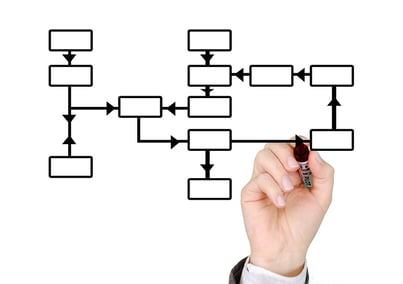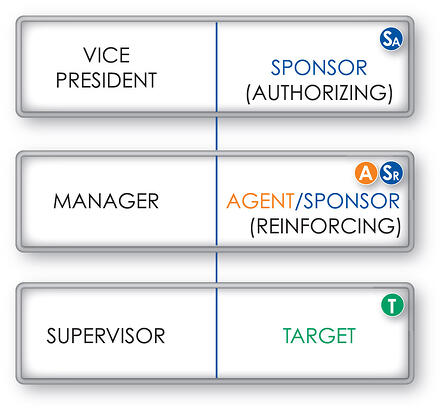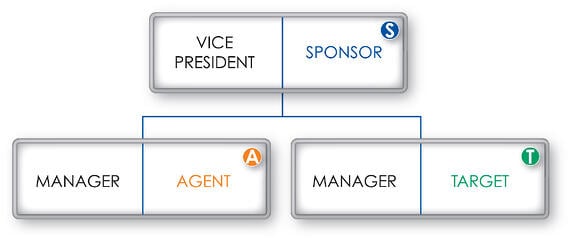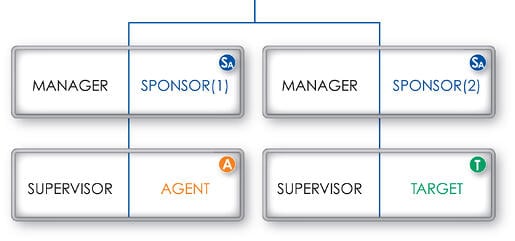If your organization is embarking on enterprise-wide change be aware that your organizational structure has a major impact on Sponsorship. 
There are three basic different reporting relationships between Sponsors, Change Agents, and Targets, and each can be effective. However, the type of relationship must be identified and managed as part of your change management methodology framework to avoid potential risks and liabilities.
The linear relationship is simplest, but it is also the least prevalent in today's complex organizations. This relationship between the Sponsor, Change Agent and Target is found in a hierarchical organizational structure where the Authorizing Sponsor is at the top. The Manager serves as both the Reinforcing Sponsor and the Change Agent who reports to the Authorizing Sponsor. The Target of the change reports directly to the Manager.
 In this type of structure, it is easy to know where the power lies for enterprise wide change.
In this type of structure, it is easy to know where the power lies for enterprise wide change.
If you are in a "staff relationship" structure, you'll find that Sponsors will often try to delegate power to a staff Change Agent. The Change Agent, who is pleased with the apparent new power and influence, incorrectly assumes that the Target will see that the Change Agent has newly delegated authority.
The reporting relationship between Sponsor, Agent, and Target is critical because only the Sponsor can apply the required reinforcements for behavioral change with his or her direct reports. In the staff structure, the Change Agent has no power or authority over the reinforcement of this Target.
However, Targets understand that only Sponsors can authorize change. Sponsors can't delegate Sponsorship!

So Sponsors have to ensure that their own commitment to the change is clear to the Targets and that they personally have asked that the Agent work with the Target. It's as if the Sponsor is saying, "Read my lips. This is coming from me--Don't be confused."
The third power structure which is very common in today's complex organization is the matrix. It's easy to see why Sponsorship is difficult in a matrix structure. Who has the authority over whom? How do you get alignment across multiple Sponsors?

Change Agents will sometimes try to employ a "mega Sponsor" implementation strategy by going to the individual who Sponsor 1 and Sponsor 2 report up to. This is especially true in a situation where there is no history of collaboration and teamwork between the two Sponsors and where they have operated as organizational silos.
While the mega Sponsor strategy can make sense, it carries risks as well. For example, in this situation decision-making is pushed up and it can be both slow and disempowering.
There is an alternative.
Simply put, in this structure the Change Agent has to ensure that the Sponsors have alignment on "strategic intent" and on "strategic priorities." If these Sponsors don't agree on what the priorities are you can be assured that there will be problems in getting enterprise wide changes implemented.
These structural relationships are important because generating Sponsorship for your enterprise wide change is the single most important factor in accelerating the implementation. Change Agents need to have a clear strategy on how exactly they will build the "cascade of commitment" layer by layer in all the areas impacted by the change.
Your change management methodology should be flexible and scalable so that you can apply it no matter what type of reporting relationships you are dealing with. This "scalability" is a critical feature of the Accelerating Implementation Methodology (AIM) and is especially important when you are dealing with the complexity of enterprise wide change.


